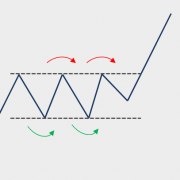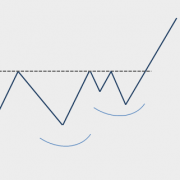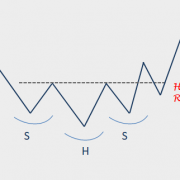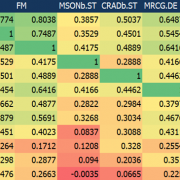4 Types of Breakouts and How To Trade Them - March 2021 Tech Charts Webinar
We are continuing our Member webinar series with the types of breakouts a chart pattern can experience. In the following webinar, we will review the 4 types of breakouts that chart patterns experience and how to manage each one.
Webinar Outline
- Review of chart pattern statistics and discussion on chart pattern reliability
- 4 types of breakouts and examples on each breakout situation
- How to manage open trades with each type of breakout
- 4 types of breakouts (hard re-test, re-test, failed breakouts, breakouts without any pullback)
- Review of latest chart pattern setups
- Member Q&A
Live questions from Members
Question 1: When you post ideas on Twitter, where can I find them on the member's site? 56:21
Question 2: Do you use stops and how do you set them? Also, would you look at trailing stops to exit a position? 57:12 (LINK:
ATR Trailing Stop-Loss - H&S Top)
Question 3: Do you invest in any volatility futures, Aksel? If so, what is your strategy in terms of technical analysis since even the futures themselves could be extremely volatile? Can this be covered in the Tech Charts report? 57:44
Question 4: Is the Rectangle pattern similar to a Flag pattern? 58:35
Question 5: Which broker do you use that provides you to trade HK, Canada, South Africa, and Turkey stocks? 59:04
Question 6: You showed in a weekly chart that for H&S top failed breakdown, exceeding the negation level is enough, or don't you prefer to see the weeks closing in order to be sure it's a failed breakdown as you prefer for daily charts? 59:59
Question 7: How do you decide on the price level of horizontal lines? To be more specific, in the daily scale of a chart, let's say if 5 bars are reaching the bottom horizontal line of a rectangle pattern, and all their close and low price levels are different even though the prices so close to each other, how do you decide on the bottom horizontal lines price level? Do you consider the lowest closing price level or average or median of lows, etc? 01:01:06
Question 8: Do you use the gap strategy in your trades? If so, do you have success percentage of those (for the price coming back to the level of the gap)? 01:01:53
Question 9: Could you give your opinion on Silver futures or SLV at this time? 01:02:38
Question 10: Does using a trailing stoploss create problems during pullback? How do you deal with that? 01:03:04
Question 11: The double bottoms that keep forming in various charts do they qualify as eve & eve or eve & adam? Would they qualify for bottom reversals or continuations? Can you explain them in comparison to cup & handle? 01:04:05
Question 12: Do you use cycle analyses in selecting stocks? 01:05:22
Recorded live 03.11.2021
Read More 







